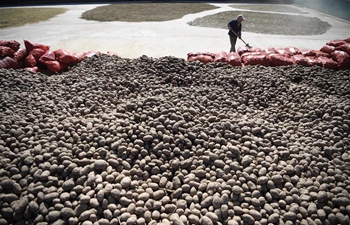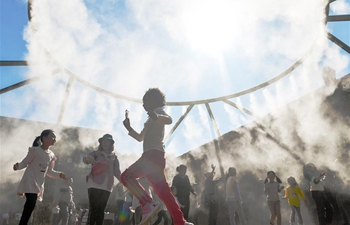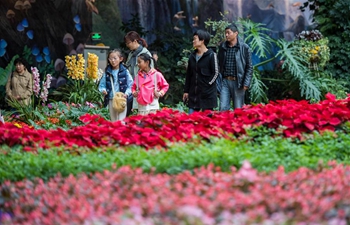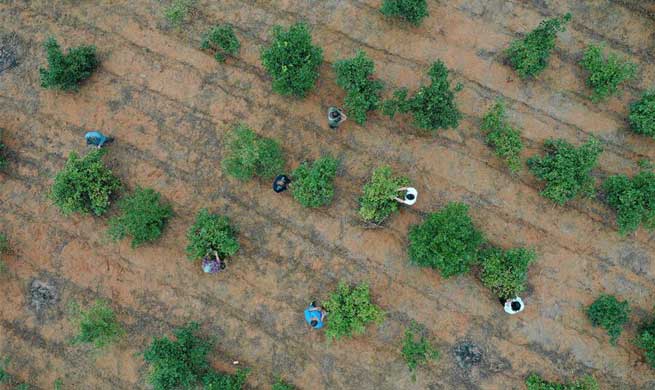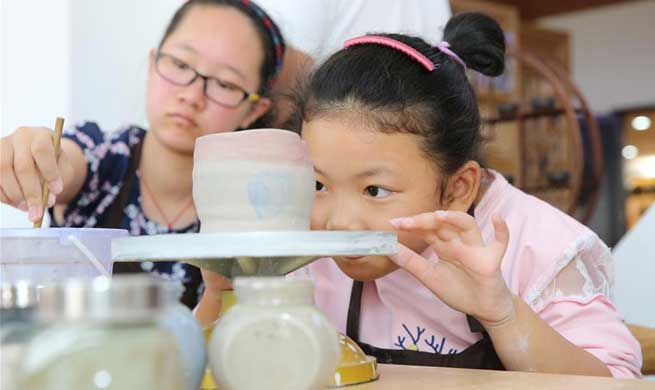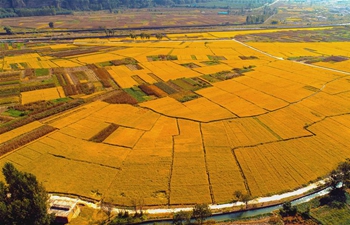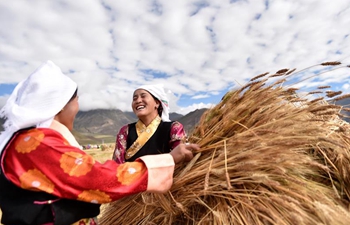HANGZHOU, Oct. 4 (Xinhua) -- Sipping tea on a roof-top terrace while overlooking the forested mountains directly below and just beyond, office worker Gao Lili, 29, spent her first day of the week-long National Day holiday relaxing in the plush O2 lounge, about 400 km away from the city of Hangzhou.
Once an outbound tourism lover, Gao felt fed up with the fatigue and crowds of long-distance journeys and tourist attractions.
With a hectic work schedule waiting for her at the end of the holiday, she decided to refresh herself through wellness tourism, which emphasizes traveling to promote health and well-being.
With over 96.5 percent of the area covered by forests, the Tongling Mountain township in the city of Wenzhou, eastern China's Zhejiang Province, boasts negative oxygen ions exceeding 360,000 per cubic centimeter, a genuine ideal destination for many young Chinese like Gao.
Dozens of forest bases developed by the wellness tourism industry in the city also provide tourists with supporting services including health-preserving enjoyment by traditional Chinese medicine (TCM), Yoga and Tai Chi exercises, as well as healthy food selections.
"Even the best machine cannot withstand long-time high-load operations and neither can our bodies," said Gao, who works in an Internet finance company earning around 15,000 yuan (2,185 U.S. dollars) per month in Hangzhou, capital of Zhejiang.
An employee at a hotel in Tongling Mountain township, Liu Zhuying was also amazed at the increasing popularity of the emerging industry.
The region plans to build 50 wellness tourism bases, and it is estimated to receive about 70 million tourists annually by 2020. The total value of output will exceed 27 billion yuan by that time.
"Countries like India, the Republic of Korea, the United States of America, Switzerland and Singapore are world-renowned destinations for wellness tourism, and they all have their competitive medical tourism systems," said Zhu Shanzhong, executive director of the World Tourism Organization (UNWTO).
"In the past, wellness tourism has been related to older citizens and their lifestyles. But now, more and more young Chinese favor in-depth travels for the purpose of health preservation," said Yang Honghao, an expert with the China Tourism Academy.
Among the young tourists, white collars like Gao will be a major driving force of the industry.
Yang noted that there are more than 80 million white collars and about 110 million people in the middle class in China. In the meantime, China has a huge number of sub-healthy people, which are likely to inject strong vitality into the wellness tourism industry.
A mature industry chain with complete supporting services, such as the TCM services and oxygen lounges that Gao is enjoying on her holiday, attract young office people to the new holiday resorts.
"It is a good time to care for your health in the autumn and winter according to the regimen of TCM, and thus, hot springs, mountaineering and other featured wellness tourism are expected to become a hit," said Zhao Zhongliang, a local home tourism operator.






